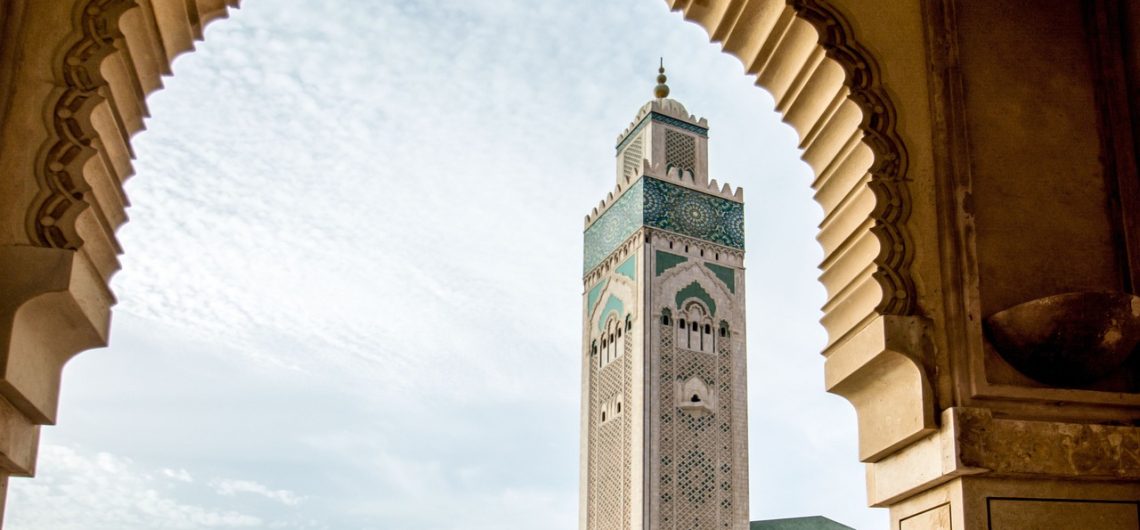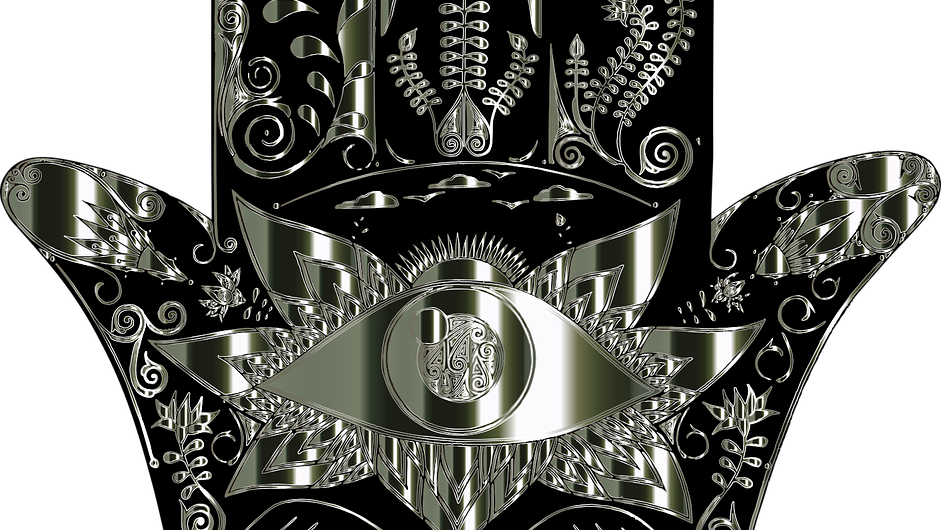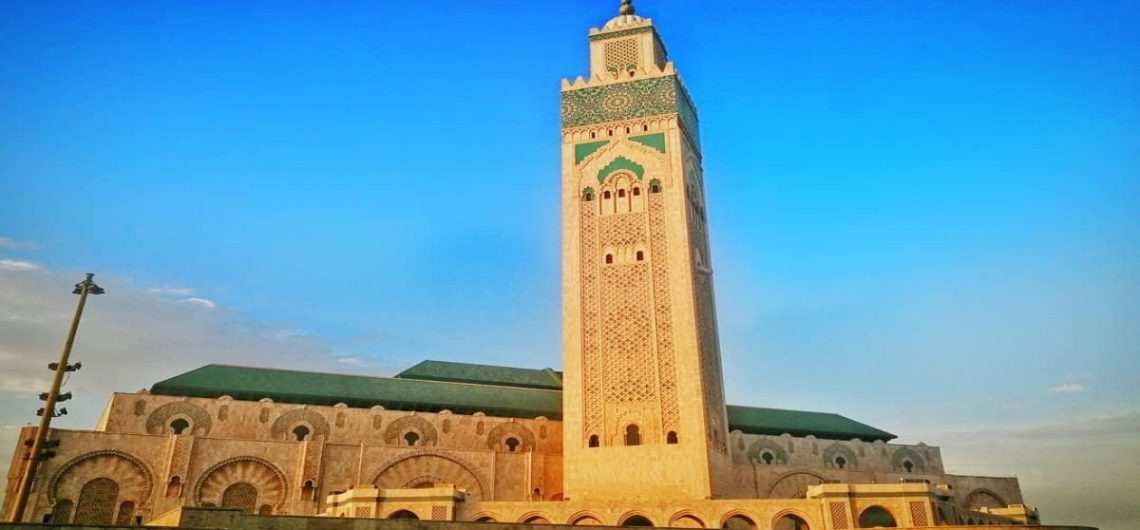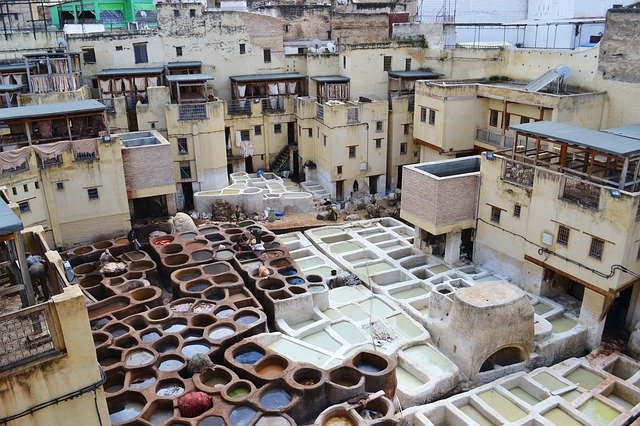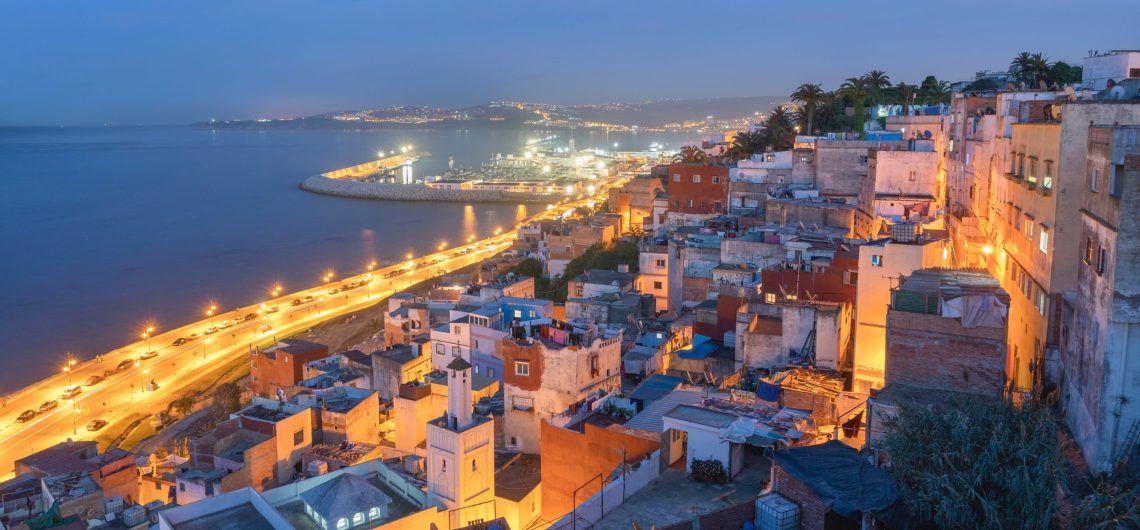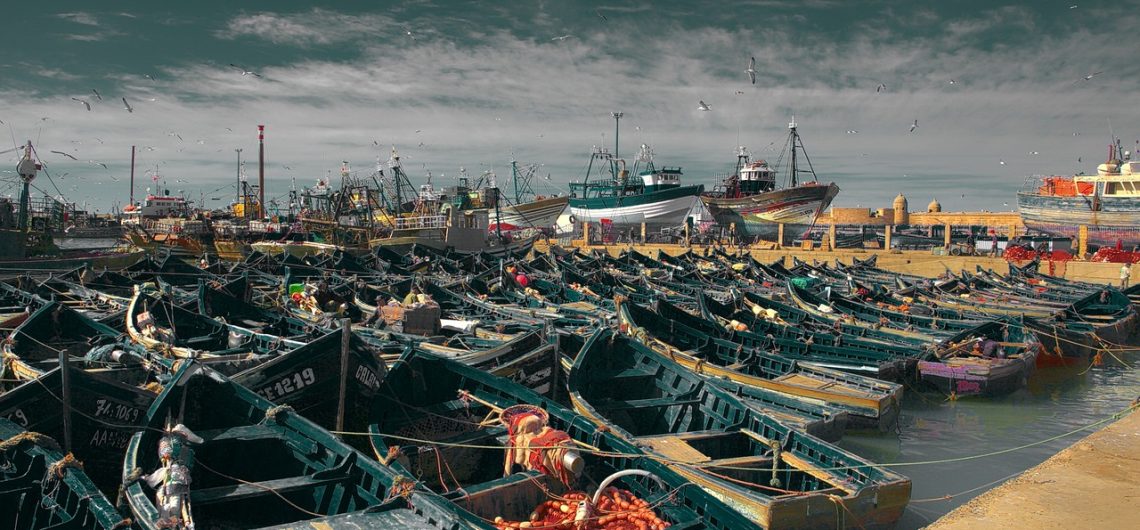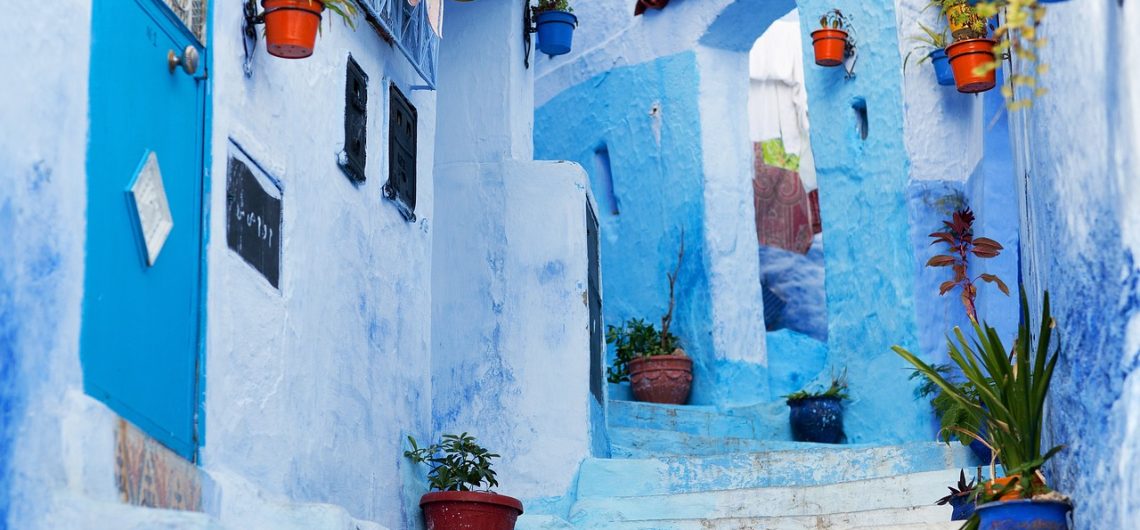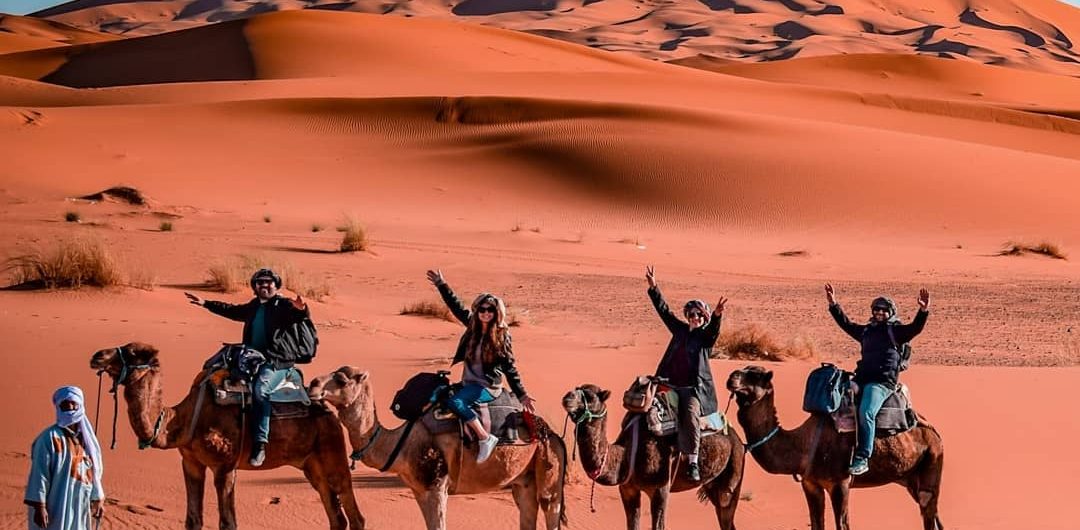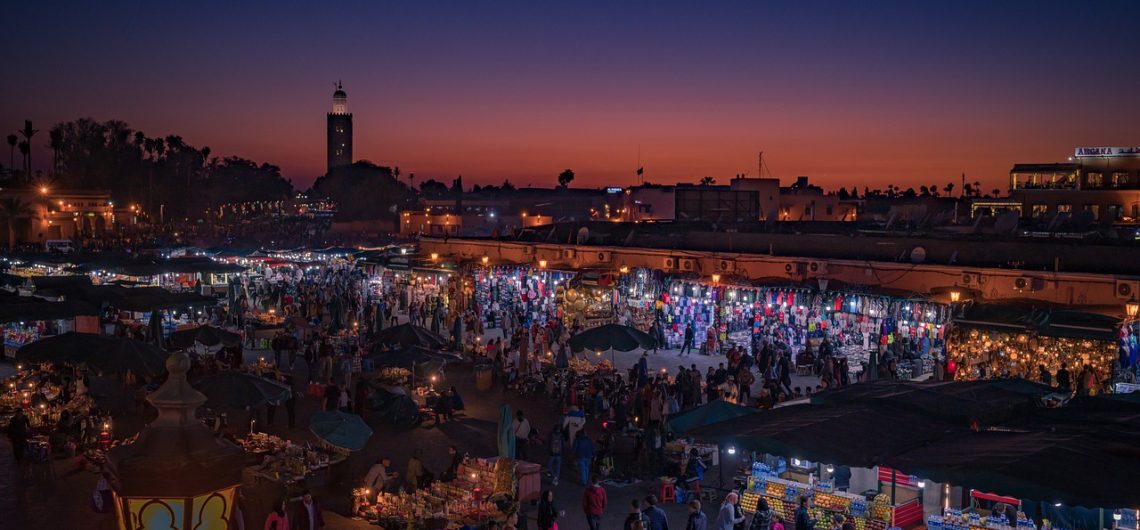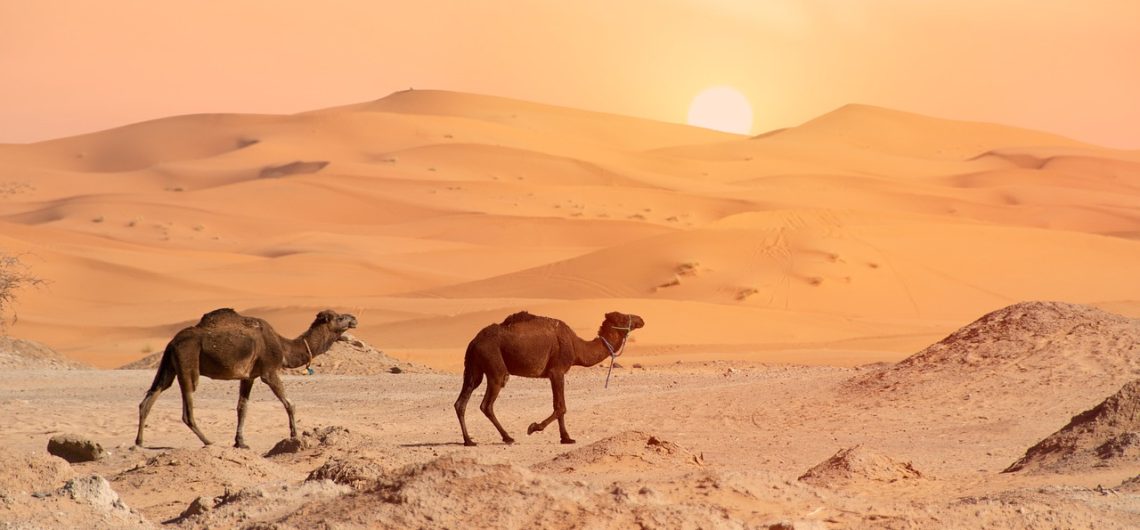Best Moroccan cities: general information
Who would have believed that a vacation could be taken in Morocco? What do you know about this country, except for the fact that Morocco imports luscious tangerines from here? When you book a tour in Morocco, you will be captivated by its beauty and color. Berber, African, Arabic, and Spanish cultures were all established there. As you walk through the streets, you will see the Catholic Cathedral on one side, a mosque with a huge tower on the other, and Western Sahara beauty on the third. This fusion of cultures, as well as the stunning scenery of the Best Moroccan cities, inspired Yves Saint Laurent to create new works of art. Morocco’s beaches, which are bathed by the waters of the Atlantic and Mediterranean seas, excite travelers far more.
Morocco is located in northern Africa. On the map, it is close to Spain. Morocco is separated from Europe by the Strait of Gibraltar. The country is part of the Arab West, generally known as the Maghreb. Morocco is home to over 36 million people, with roughly 60% Arabs and 40% Berbers.
Morocco’s modern way of life is undeniably affected by its history. In the distant past, the region belonged to Carthage, then to the Roman Empire, then to the Vandals, and lastly to the Byzantines. During the Middle Ages, Morocco was absorbed into the huge Arab empire. Maritime pirates held de facto rule of the country during the 16th and 17th centuries. As a result of the conflict, the land was divided between Spain and France throughout the rest of the nineteenth and twentieth centuries. Morocco did not get independence until 1956. However, the exact Western Saharan border remains a historical question.
Moroccan culture, customs, and daily living all reflect such key historical events. Welcome to Morocco, and we urge you to explore this colorful country.
The Best Moroccan cities have sustained population increase. The fact that the capital is not the largest city in the country is already remarkable. The issue is that Rabat and Salé are connected by a bridge yet separated by a river. They are part of a metropolitan area with a population of 2.5 million people. The extraordinary, which covers everything from food, carpets, and handicrafts to architecture and landscapes, is why Europeans visit Morocco.
When is the best time to go to Morocco?
Determine the type of trip you want before answering the question “When is the ideal time to visit Morocco?” Summer is the busiest season for travel in Morocco. Tourists arrive at the beach. If you want to take full advantage of the Atlantic’s abundance of water, we recommend visiting in August and September. By this time, the water has warmed significantly.
Visitors travel from all over the world to the ski resort since Morocco is known as the snowiest place in Africa. If you want to climb the Atlas Mountains, come around January and February.
Morocco excursion getaways are ideal during the off-season. The temperature increases sufficiently to allow for lengthy outdoor exercise.
How can I go to Morocco the quickest?
Of course, by airplane. There are no direct flights from Novosibirsk, therefore you must change planes in Moscow. Morocco has numerous airports. Russian guests arrive on charter planes at Agadir Airport, the most well-known resort. In addition, there are frequent flights from Moscow to Casablanca and Marrakech.
Best Moroccan cities and Regions
Best Moroccan cities: Casablanca
The Spanish word for “white home” is Casablanca. Casablanca, on the Atlantic Ocean in western Morocco and adjacent to the capital Rabat, is one of the Best Moroccan cities.
In the Middle Ages, Casablanca was known as Anfa. It was entirely destroyed by the Portuguese in the fourteenth century and restored in the sixteenth. In 1755, a second earthquake devastated and rebuilt the city.
The French took control of the town in 1907. During their reign, the city began to grow rapidly and flourish. Casablanca’s new city grew up around the old one.
During World War II, American and British troops often landed in Casablanca. There were also talks between Franklin D. Roosevelt and Winston Churchill.
As a result of Morocco’s independence in 1956, the French abandoned the city. Casablanca was beset by financial problems at the time. Tourism and a robust economy boosted its development.
Casablanca is the most important commercial center in North Africa. The city is linked to the rest of the globe via highways, railroads, an airline, and a massive port in one of the world’s largest man-made harbors. Casablanca is the international hub for the majority of the Best Moroccan cities.
Grains, phosphates, leather, and wool are among the items exported from Casablanca. The primary industry branches are furniture production, fishing, woodworking, and construction materials. Glass and tobacco are also thriving industries. The majority of financial transactions take place in Casablanca.
The Hassan the Second Mosque, located on Casablanca’s Atlantic coast, is the city’s principal attraction. This mosque, together with the one in Mecca, is the largest in the Muslim world. French architect Michel Pinceau designed this structure. The mosque is a cultural institution as well as a place of worship. A national museum and library are housed here.
The mosque’s design and adornment are magnificent. The roof of the mosque can be raised in three minutes, transforming the prayer hall into a patio. Murals, patterns, and Arabic inscriptions adorn the hallways. Inside the structure, up to 100,000 people can be accommodated. The Hassan the Second Mosque was erected in the twentieth century and is the most beautiful mosque ever built.
Casablanca’s bazaars merit special notice. One full block of Habbous is dedicated to market trading. A confluence of short alleys and alleyways can form a market square divided into three sections: a sweets market, an olive market, and a pottery market. There are antique shops nearby where you may buy items made of fancy textiles for incredibly low costs or taste a delightful date dessert.
The Corniche district of Casablanca is popular with nightlife enthusiasts due to its abundance of beaches, resorts, bars, and eateries.
The Pasha, Casablanca’s administrator, used to entertain guests and hear cases in the Mahakma du Pacha, a beautiful historic structure in Casablanca. Due to the exquisite interior design of the 64 halls and the abundance of decorative art in the interior courtyards, this structure has become one of the district prefectures.
Best Moroccan cities: Fez
The Moroccan city of Fez has a population of around 500,000 people. Fez and Casablanca are separated by 294 kilometers. Fez is Northern Africa’s largest and oldest city. The University of Fez, the world’s oldest, is located in the city and is well-known for it.
Idris, I established a settlement on the eastern side of the river Fez around 789. Idris II established the capital of the Idrissid state on the opposite bank of the river 20 years later. The Almoravid dynasty united the two Best Moroccan cities in the eleventh century, and by the twelfth century, Fez had grown to become the biggest metropolis in Islam. During the Berber Marinid dynasty, Fez was elevated to the position of Morocco’s capital, and various new buildings were constructed.
Fez is now divided into two sections: the ancient Fez el Bali and the new Fez el Jedid (new). The old city was built during the Middle Ages. Approximately 9,000 streets and lanes are unidentified. Some streets are so narrow that passing through them requires touching both walls.
Fez has two mosques: the Karawin Mosque, the largest in Northern Africa, and the Moulay Idris Mosque, a particularly protected sanctuary where non-Muslims and animals are not permitted. Fez is said to have 800 mosques.
Journey to Fez
Fez is one of the best imperial Moroccan cities. Fez was founded in the seventh century as a crossroads for numerous cultures. The Best Moroccan cities of today are a synthesis of their past and present. The medina of Fez (Fez el Bali) is fantastic in its complexity and size, with 14 gates, 6,000 streets, 200 mosques, and 180 hammams. Every time you turn in Fez, you must be prepared to learn something new. There are also lovely grounds and a regal home. Fez sightseeing tours are amazing. The city is not a beach resort because it is located far from the shore.
Fez is one of the best Moroccan cities to visit.
What can you do in Fez? Keep to the medina’s main thoroughfares.
The history of Fez is well known. History bestowed two medinas on the city at the same time. On any trip to Fez, it should be obligatory to stroll to both. The medina of Fez (Fez el Bali) is amazing in its complexity and size, with 14 gates, 6,000 passageways, 200 mosques, and 180 hammams. There is the world’s largest pedestrian zone. As you walk through the narrow streets, you can sense the Moroccan ambiance. A true medieval community is distinguished by old buildings, handcrafted shops, bustling markets, and residents riding donkey carts. The most important thing here is to avoid getting lost. Hire a guide to show you around the medina, stopping at the most fascinating spots. This mini-excursion will keep you entertained for three hours and will cost you five euros.
Fez Jadid is the name of a second medina in Fez. Even though it was founded in the thirteenth century, it is still seen as new. On all sides, fortifications encircle it. While strolling around the streets, you may notice Mellah’s Jewish community, the royal palace, and the kasbah Sherard (fortress).
Take in the splendor of the royal residence.
The royal palace of Fez was built in the 17th century. It now covers approximately 80 hectares. In addition to the palace, there are exquisite gardens, fountains, mosques, and Fes’s oldest school.
Because it was erected in accordance with all architectural conventions of the time, the palace in Fez shares traits with palaces found in other imperial cities. The bedrooms are lavishly furnished. Carpets are expensive, materials are natural silk, windows are stained glass, ceilings are gilded cedar, and walls are framed with Arabic mosaics.
Unfortunately, the palace is not open to the public, despite the fact that it is surrounded by seven beautiful gates in and of itself.
In the distance, you can see the Al-Qarawin University Mosque
In the ninth century, the institution initially opened its doors. This region has produced many theologians, philosophers, and thinkers who have affected Muslim and global cultural development. According to UNESCO, the university is currently the longest continuously operating educational institution. The mosque’s towering square minaret, ornate carvings, and arches reflect Moroccan architectural traditions. Although the surroundings are breathtaking, not everyone is permitted to enter. Through the open doors, you can glimpse its grandeur.
Investigate the workshops
It would be a crime not to visit a workshop in this city of artisans! The historic medina contains a number of workshops. Visit the pottery to quickly create a tagine. You can also observe the meticulous work of painters who dot their plates. Mosaic painters painstakingly cut small elements, such as a table, sink, or panel, for use in subsequent handmade paintings in other workshops.
See how leather is colored by visiting Choire’s famed tannery neighborhood.
Fez is well-known for its artisans, particularly leatherworkers. Traditional leatherworking processes have their own business dedicated to their preservation. Leather is rinsed in the paint for an extended amount of time before being left to dry outside. To begin, masters soak leather in lime baths, bird-dropping treatments, and paint. Among the dye’s all-natural ingredients are henna, turmeric, and other beneficial plants.
Stores that offer finished goods are frequently near the factories. At the door, you will be given a sprig of mint to help mask the scent of the workshops. The low cost of the products is a significant advantage. You may acquire high-quality items for a ridiculously inexpensive price here.
Visiting a local market
In the medina of Fez, both tourists and locals may shop at a variety of markets. The vitality of the Arab East can undoubtedly be felt here. You may buy keepsakes, textile and pottery items, exquisite fruit, and spices by weight at the market.
Remember to bargain. Prices can be two to three times inflated, so do not be afraid to bargain with the vendor.
Best Moroccan cities: Tangier
Tangier, is a Moroccan city near Gibraltar with a key location at the western entrance to the Mediterranean Sea, with a population of 428,000 people (1993). The Moors, who had previously built the old Roman port city of Tingis on the site, constructed the walled city that exists today during the Middle Ages. It was captured by the Portuguese in the late 15th century and delivered to Britain in 1662 as part of Princess Catherine of the Portuguese Braganza dynasty’s dowry before her marriage to King Charles II of England.
After 22 years, Britain handed up control of the city to the Moroccan Sultan family, who dominated the port and surrounding area until 1904. The city was under Moroccan authority until 1956 when it was handed over to the Sultanate. T. and its environs were later designated as a Special Zone under international law until 1956. (except for a five-year period during World War II). It was included on the newly independent Kingdom’s list of the Best Moroccan cities in 1956. T. became an “open port” in 1962 and has since grown to become an important commercial, economic, cultural, and tourism destination.
Tangier Travel
Tangier is a well-known tourist attraction in northern Morocco. Its dual exposure to the Atlantic and Mediterranean waters is what distinguishes it. Tangier’s natural beauty includes stunning beaches, cliffs, large mountain ranges, and small harbors. The Pillars of Hercules are a genuine natural wonder. The rocks were built by Hercules, according to Greek mythology. In addition to enjoying the natural beauty of the medina, tourists explore historic sites, browse in neighborhood markets, and take photos against the backdrop of gorgeous architecture. Travelers who appreciate the beach and sightseeing should consider visiting Tangier.
How can I travel to Tangier as efficiently as possible?
No nonstop flights connect Novosibirsk and Morocco. Tangier excursions begin with a stop in Moscow, followed by a journey from Casablanca to Tangier. The distance between the resorts is 340 kilometers. A railroad connects Casablanca with Tangier.
The ferry is also available from Spain. It is only 16 kilometers distant. However, you would need many Schengen visas to do so.
Tangier sightseeing
What are your alternatives in Tangier?
Hercules Cave photography
Tangier’s major natural attraction. Hercules supposedly decided to take a vacation and regain his strength here before embarking on his eleventh expedition, which required him to obtain the golden apples from the garden of the Hesperides. The grottoes are currently one of the most popular tourist spots in Morocco. The cave’s entrance has two sides, one from the sea and one from the land. Furthermore, the entry to the sea outlet is shaped like the African continent.
The cave provided a relaxing atmosphere for guests. The caves are clean and well-lit. There is also an observation deck available. It costs 5 dirhams to enter.
Tangier’s Medina
If you plan a trip to Tangier, make sure to see the medina or city center. The old city has an Arab area with many twisting lanes and a large population. As you go around the medina, you will notice mosques, old homes, luxurious homes, and, of course, a large market. You can buy spices, rugs, natural cosmetics, fabrics, lamps, and other souvenirs from Morocco. Visitors to the bazaar are amused by the sellers, snake charmers, and performers.
Climb to the kasbah’s viewing platform
The Kasbah is the medina’s principal historical attraction (fortress). It was created by the Portuguese during the 18th-century colonial era. According to historians, the foundations were laid during the Roman Empire. The fort offers breathtaking views of the old town, the sea, and the Spanish mountains. The general public is invited to the viewing decks.
Learn more about the Sultan’s Palace
A palace for the Sultan is located on the grounds of the kasbah (fortress). The palace was constructed in the 17th century for Sultan Dar al-Mahzen. The Museum of Moroccan Art and the Museum of Archaeological Antiquities are currently housed in its luxuriously wide galleries. Visitors can view artwork from all throughout Morocco in the first and ancient treasures in the second. The palace is surrounded by magnificent gardens with Moroccan-Andalusian ornamentation.
Take part in the Asilah Beach Festival.
Asilah distinguishes itself from other beaches due to its ecological and historical significance. There are relics of the Portuguese fortress walls and bastions built during their 15th-century colonization. Summer festivals, cultural activities, and musical performances are conducted on the beach, which has been turned into an outdoor theater.
Feel the 800-year-old tree.
The magnificent Mendoubia Garden, north of Tangier, is a green island home to exotic vegetation, distinctive flowers, and tall trees. Naturally, visitors are drawn to the massive, incredible dragon tree. It is 800 years old, according to locals.
Tangier’s coastline
Despite the popularity of Tangier’s beaches, we do not encourage visiting them. It’s pretty crowded, hectic, and filthy. West of Tangier, on the other hand, offers more tranquil beaches.
To enjoy the waters of the Atlantic Ocean and the blazing sun, we propose staying in hotels with private beaches. Tangier beach hotels include Kenzi Solazur, Movenpick Hotel & Casino Malabata Tanger, Hotel Miramar, and Marina Bay.
Best Moroccan cities: Marrakech
Marrakech is a town in southeast Morocco near the High Atlas Mountains. The Almoravids founded it around 1070. (alternative versions say 1060 or 1062). Morocco’s capital from the eleventh through the eighteenth centuries. This ancient city, known for its Medina (old town), Casbah (fortress), and Agvedal Gardens with pavilions and lakes, is surrounded by walls with rectangular towers and gates. Medina symbols: Qubba al-Baruddin (domed pavilion, decorated with carvings of stone and stucco, – part of the palace of the unparished Almoravid, the first half of the XII century.) Hotels in Qutubiya (concrete, stone, and brick, XII century).
Kutubiya (concrete, stone, and brick, 12th century); 17 transverse and one longitudinal nave, domes with stalactites, artesunate; Ben Salih with minaret (stone, 1184-99); Bab Dukkala (1557); Ben Youssef Madrassah (1565); and Zawiya Sid (1894-1900; garden). Mosque (1197), a necropolis with tombs from the second half of the 16th century, Bab-Agvenau (gate; 12th century, carved stone decoration), Badi (1578-93; in ruins), and Dar el-Makhzen palaces are also close (late 19th century; garden). Around 1913, the contemporary city was built to the west of the medina. Carpet weaving, stone carving, and other crafts have long been prevalent in Marrakesh. The Museum of Moroccan Art and the Museum of Treasures and Ceramics are two museums located in the late-nineteenth-century Dar Said palace. The remains of the 12th-century Tasgimut Fortress may be found 30 kilometers southeast of Marrakech.
Holiday in Marrakech
Marrakech is also one of the best imperial Moroccan cities. Gardens, mosques, and historic Arab-African architecture are all well-known aspects of Marrakech. If you plan a trip to Marrakech, you will undoubtedly recall Scheherazade’s fairy stories. Visit the majestic palaces, beautiful gardens, markets brimming with bright merchandise, and the ambiance of the East. Excursions are possible in Marrakech. The city is not a beach resort because it is located a long distance from the shore.
How should I travel to Marrakech?
- No nonstop flights connect Novosibirsk and Morocco. Siberian visitors can travel to Morocco via Moscow.
- There are various options for getting from Moscow to Marrakech.
- From Moscow, you may fly directly to Marrakech.
- After taking a direct trip to Agadir, drive to Marrakech. The distance between the resorts is 250 kilometers. You have three options: a bus, a rented car, or a transfer.
- Take a direct flight to Casablanca, then a car to Marrakech. The resorts are 240 kilometers apart.
- You have three options: a bus, a rented car, or a transfer.
- Marrakech’s Attractions
- Marrakech is not a holiday location in the sense that you will not be staying for an extended period of time. Yes, culture shock can occur in this magnificent city. As you drive throughout the neighborhood, you’ll observe majestic palaces, lush gardens, boutiques brimming with vividly colored merchandise, mosques, and old buildings. You merely need to make a short trip from your resort to Marrakech for one to three days to see the sights.
What should you do in Marrakech?
Explore the medina on foot.
The medina is without a doubt the beating heart of Marrakech. If you’re on a tour to Marrakech, make it a point to walk here. The ancient city contains an Arab district with many twisting pathways and dense architecture. To resist invasions, the medina’s perimeter was built with 9-meter-high fortress walls around 1000 years ago. By the way, the medina was added to the UNESCO list of cultural heritage sites in 1985.
As you walk through the ancient city, you’ll notice that most of the buildings are made of red clay. As a result, the Red City moniker was given to Marrakech’s medina. As a result, Marrakech’s medina is known as the “Red City.” Day and night, there is constant activity here. Artists create gifts, business owners compete to attract visitors, and snake charmers wait for their audience. Jem el-Fna Square is the medina’s magnet.
While in Djema el-Fna Square, you are transported to an eastern fairy tale
The major square of Marrakech is recognized for its atmosphere and ability to attract tourists. The square is both historically significant and part of the UNESCO Intangible Cultural Heritage. The “square of beheadings” got its name because thieves and criminals were killed here in the 10th century, often as many as 50 per day. The gates had their heads attached to them.
The pleasant present stands in stark contrast to the horrific past. Jem el-Fna Square is currently the busiest location in town. During the day, souvenir vendors sell their items, but at night, the area is turned into an outdoor theater, with performances by sword swallowers, acrobats, snake handlers, artists, odd dancers, snake tamers, and other entertainers. You’ve entered a Chinese fairy tale. You could enjoy a good and reasonable bite here as the site transforms into a large food court.
According to visitors, the site is unique. The stress of the barkers is one thing, but the unusual mood of the plaza is what draws tourists.
The Majorelle Garden served as a source of inspiration
The garden can be found in Marrakech. This garden served as Jacques Majorelle’s workshop throughout the early half of the twentieth century. The painter, who also enjoyed collecting plants, returned from his excursions with rare Asian lotuses and cacti from North America and Mexico. To contrast with the vegetation, Jacques Majorelle painted the features of the villas and pergolas a bright lemon color and the walls a beautiful blue tint. As a result, this color palette became distinctive to the park. The garden was left unfinished after the artist’s death.
Later, the property was purchased by the famed French fashion designer Yves Saint Laurent and his companion Pierre Bergé. The house had been cleaned. Visitors can now take in the beautiful views, ponder nature, take photos against the vivid blue walls, and shop Yves Saint Laurent’s personal treasures. The garden appears to be a small slice of heaven, but be warned: you can walk around it in 20 minutes if you want to. The museum charges 30 dirhams, while the Majorelle Garden charges 70 dirhams.
A variety of marketplaces in Marrakech’s medina are open to both tourists and residents. The vitality of the Arab East is palpable here. The market sells spices by weight, as well as a delicious fruit, linens, and pottery. Click here to read more about the items offered in Morocco.
Remember to haggle. Prices can be two to three times inflated, so do not be afraid to haggle with the dealer.
Investigate the Bahia Palace
Bou Ahmed Sidi Moussa, Grand Vizier of the Moulay Hasan and Moulay Abd al-Aziz monarchs, erected the palace for one of the harem’s four women. During the construction phase, the area grew to eight hectares. Four wives and twenty-four concubines once lived here. The materials for the ornamentation were brought in from all around Morocco, and the palace was magnificently ornamented as envisioned. Interior design components such as hardwood doors, painted ceilings, excellent stone carvings, and traditional mosaics create an affluent environment. The surrounding region is likewise well-kept; lovely courtyards are shrouded in foliage. Surprisingly, once the palace was finished, the Sultan even envied the Vizier since the harem had grown to be the most elegant in all of Morocco. You’ll understand why when you see the palace.
Stay in a Moroccan-style hotel when visiting Marrakech. Many classic Maghreb homes with patios and gardens are being utilized as hotels. These rooms are accessible at any price because hotel quality varies. The “three” is intended for casual travelers, while the “five” is appropriate for individuals who value comfort and level of service.
Marrakech is also home to La Mamounia, Morocco’s most luxurious hotel. It resembles a true oriental palace. The presence of members of the royal family demonstrates its prominence.
For those on a strict budget, we recommend visiting the “four,” which include the Golden Tulip Rawabi and Riad Mogador Kasbah.
Liberty Travel’s managers will assist you in selecting a trip to Marrakech and the best hotels in the city based on your interests.
Best Moroccan cities: Agadir
The most popular beach resort in Morocco. The Atlantic Ocean washes the beaches of Agadir, which are surrounded by beautiful sand. The beachfront is approximately 6 kilometers long. There are hotels in Agadir to suit every taste and budget, from a five-star luxury hotel with thalassotherapy amenities to a modest “three” for those with less refined tastes. The high level of service is due to the huge number of Europeans present. The majority of hotels are located along the second coastline. The resort is ideal for both surfers looking to catch a wave and others who like relaxing beach vacations.
Vacations in Agadir
Agadir is a well-known seaside resort and one of the most beautiful Moroccan cities. The beaches of Agadir, which are washed by the Atlantic Ocean, have golden sand. The seashore stretches for around 6 kilometers. There are hotels in Agadir to suit every taste and budget, from a five-star luxury hotel with thalassotherapy amenities to a plain three-star hotel for travelers with less refined tastes. Because there are so many Europeans there, the service is excellent. The majority of hotels are located along the second coastline. The resort is ideal for both surfers looking to catch a wave and others who like relaxing beach vacations.
Attractions in Agadir
Because Agadir’s beaches are its main draw, the majority of the entertainment takes place outside of the resort. Booking a vacation to Agadir in the south of Morocco provides an excellent opportunity to learn about the country’s culture and history.
If you don’t feel like stepping out, you may enjoy Agadir’s beaches, ocean waves, windsurfing, walking tours, nightlife, wonderful seafood, horseback riding, golfing, and thalassotherapy treatments.
So, what should you do in Agadir?
Take a tour of the Best Moroccan cities.
Agadir lacks the old city that draws visitors to Fez and Marrakech. There are, however, other attractions to see here. You can walk around the city’s streets and boulevards while also visiting the park “The Valley of Birds” in the center. The bulk of the creatures in this tiny zoo are birds, such as pink flamingos, swans, peacocks, and parrots. Relax on one of the benches located among the trees. Kids can play in the sandbox. The park has no admission fee.
The Lubnan Mosque is also located in the city center (Lebanon). Despite being totally rebuilt following the 1960 earthquake, it has a highly conventional appearance. The mosque is wonderful and gives the residents enormous pride. The towering minaret is covered with ceramic mosaics. The mosque can only be admired from the outside because it is not open to foreign tourists.
Souk el-Had is a city market and a shopaholic’s dream. The most important thing is to avoid getting lost among the 6,000 stores. The market is enormous, ranking third in Africa. You can buy pottery, textiles, leather goods, spices, and other items as gifts for yourself and your loved ones here. Remember to bargain.
Head to the Marina to see the marina and Agadir’s most beautiful location. This region is located at the base of Agadir’s famed mountain, which has the phrase “God, King, Fatherland.” The area’s construction began in 2007. The homes are the Marina’s “crown jewel” because they are situated in such a way that a boat can reach them immediately.
Tourists are lured to the Marina by its scenic backdrop of an azure sky, azure lake, countless ships, and coastal wind. Fresh fish is offered in a variety of supermarkets and restaurants.
Return to the beach or the ocean in the evening. Locals and visitors alike stroll about and enjoy the scenery. Visit the Ferris wheel on the waterfront to see a lovely sunset.
Try to catch a wave
Water sports enthusiasts flock to Agadir’s shoreline. The ocean’s waves are tremendously beneficial to surfers. If you’ve always wanted to, go ahead and try it. You can try water skiing, surfing, or windsurfing.
Discos allow you to dance all night long.
When the lights are flashing, you can dance in Agadir’s clubs. Boulevard du 20 Aout, which is packed with cafes, pubs, and clubs, is a terrific site to start your night out. L’Actors, one of Agadir’s most well-known clubs, is also located on this street (Royal Atlas Hotel). The club holds events with the most trendy DJs, thanks to its wide dance floor and beautiful lights.
The majority of clubs are housed within enormous hotels.
Parties often begin at 1:30 a.m.
Entry costs about 100 Moroccan dirhams. A typical alcoholic beverage costs 130 dirhams in a club.
Also saw crocodiles.
It is advisable to visit the crocodile farm when in Agadir on vacation. This activity will appeal to both adults and children. The property is exquisitely furnished, right down to the entryway, which is shaped like an alligator’s mouth. There are approximately 300 crocodiles in this location. It’s difficult to picture! Tourists adore watching these magnificent creatures sunbathe on hot summer days. The crocodiles are fed at noon, 1:00, 5:00, and 7:00 p.m. They are fed at the stroke of midnight. There is also a crocodile research lab where visitors may view the displays. The park concludes with a cactus garden filled with gigantic cacti, tortoises, and curious iguanas. It’s as though you’re in the desert. The park takes two to three hours to explore.
Perhaps thalassotherapy will help you relax.
Thalassotherapy, a healing treatment, uses seawater, seaweed, and other sea ingredients. Morocco has a comprehensive range of thalassotherapy programs, including blood circulation courses, face, and body care, post-natal recovery, post-operative and post-traumatic courses, general recovery treatments, and more.
At least three variables make the best Moroccan cities ideal for thalassotherapy. First, European advances lasted through colonial authority. Second, these European technologies are significantly more affordable outside of Europe. By the way, superstars from all over the world come here to rest. Third, all of the components used in the processes are of the highest quality. The use of sea air boosts the advantages of the operations.
There are numerous options available, but it is critical to remember that the conclusion is much better if the correct road is selected. The most popular therapies are lymph drainage, algotherapy (a seaweed treatment), underwater showers, hammam + gommage (a marine clay treatment), and wraps.
Agadir Beaches
The majority of visitors to Agadir come for the sandy beaches. The Atlantic Ocean washes Agadir’s sand beaches. The temperature of the ocean will be lower than that of the Mediterranean Sea. The average summer temperature of the water is +21 degrees. The ocean’s entrance is generally smooth, making it ideal for family holidays.
Given Agadir’s 10-kilometer-long shoreline, there is plenty of room for everyone. The nicest beaches in Morocco may be found in Tamounza (12 kilometers from Agadir), Imuran (17 kilometers), Tagazou (20 kilometers), Timzgida (23 kilometers), and Agroud (24 kilometers) (30 km).
Taghazout Beach is a surfer’s and photographer’s paradise. While the former favor it for the strong waves, the latter appreciate it for the gorgeous photo opportunities provided by the rocks that surround the beach.
On Agadir’s beaches, everyone is free to do whatever they like, including toddlers playing on the sand and parents relaxing in the sun (surfing, sailing, kite surfing, and paragliding). The ocean provides great circumstances for these sports in Agadir’s central and southern districts. Anchor, Banana, Imsuan Bay, Devils Rock, Cro, Hash, and Killer all have great surf and reefs.
A promenade lined with shops, restaurants, and cafes stretches along Agadir’s seashore. You can wander here at dusk to see the sunset.
The directors of the travel service “Liberty Travel” can assist you in finding a tour to Agadir and selecting the best hotels there.
Best Moroccan cities: Meknes
A city that ranks among the top three imperial Moroccan cities. Because it is not a beach resort, the city is not a popular tourist destination. The majority of visitors arrive in Meknes by tour. Come here if you have the time and want to learn about Arab culture. Meknes is separated into two parts: the medina, which contains ancient structures including palaces, mausoleums, and old buildings, and the new portion, which contains cafes, restaurants, and gift shops. Golfing on the royal grounds is another luxurious amenity that Meknes has to offer. Close to Meknes are the well-known Volubilis Roman remains, which are designated as a UNESCO cultural heritage.
How am I going to get to Meknes?
No nonstop flights connect Novosibirsk and Morocco. Siberian visitors can travel to Morocco via Moscow.
Take a direct flight from Casablanca to Meknes. The resorts are 240 kilometers apart. You have three options: a bus, a rented car, or a transfer.
Meknes is also accessible by train from Casablanca and other Best Moroccan cities.
Meknes Attractions
Tourist excursions in Meknes are unpopular due to a lack of accommodations. It is more peaceful than other resorts, and the splendor of old structures may be viewed. Spend one or two days in Meknes and take a tour to see everything.
What should you do in Meknes?
Explore the medina on foot.
The medina is without a doubt Meknes’ pulsing heart. The main attractions can be found here. If you plan a trip to Meknes, don’t forget to stop by the medina. The ancient town contains an Arab section with many twisting passageways and tightly squeezed dwellings. The medina is surrounded by a 10-meter stone wall with corner towers that were built to resist Berber attacks. The Bab el-Mansour Gate leads to the medina. The stunning gate, which contains excellent stucco work and mosaic patterns, is already a popular tourist attraction. They are now regarded as Morocco’s most stunning gates. They were built in the 18th century.
As you stroll through the ancient city, you will notice that many historical sites have been conserved. Meknes was formerly home to the great Sultan Moulay Ismail. During his rule, many mansions, gardens, and mosques were built. Meknes is known as the “city of a thousand minarets” due to its abundance of mosques. Non-Muslims are not permitted inside mosques, even though they may observe from the outside. The Great Mosque, with its wonderfully carved doors, is Meknes’ most well-known mosque. The mosque and the Madrasa Bu Inania are nearby. It was built in a striking, airy Spanish-Moorish style.
The medina also has well-known palaces. Dar Jamai Palace was constructed in the late nineteenth century in the finest Moorish style. The structure is embellished with mosaic and tile tiles, as well as festooned arches. The mansion is encircled by a beautiful garden with orange and cypress trees. The palace now houses an ethnography museum. Visitors can learn about common objects as well as embossing and vintage jewelry. El Mansour, another palace, has become a popular tourist site.
The Kheri es-Suani cluster of medieval structures is another notable Meknes medina feature. It has grain bins, stables, and an Agdal pond. Previously, around 12,000 horses were housed in these stables, and slaves were used to powering the waterworks’ wheels. After a full day of sightseeing, you could take a moment to gaze over the water of Agdal Pond.
The Medina’s focal point is El Khedim Square, which works as a magnet. In the evening, the area is transformed into an outdoor theater, complete with snake trainers, artists, dancers performing odd dances, acrobats, fire swallowers, and much more. During the day, vendors sell merchandise. a sense of being dragged into an eastern fairy tale. You may also enjoy wonderful meals at low prices as the venue transforms into a large food court.
Visit the famed Volubilis ruins
Even if you are wary about archaeological sites, Volubilis is worth a visit. It is an ancient African island. Founded in the third century B.C., the city eventually became a part of the Roman Empire in the first century A.D. An aqueduct brought water to the city’s residents, and Volubilis was built in a certain pattern. The city thrived as a result of grain and oil trading. Volubilis eventually deteriorated due to the Arab conquest (7th century) and the earthquake (18th century).
Volubilis and Meknes are 30 kilometers apart. Despite the fact that most of the third-century Roman structures have been demolished, there are still columns, a basilica, a triumphal arch, and some 30 beautiful mosaics. When it comes to mosaics, these are extremely spectacular. The precise craftsmanship that has lasted the test of time continues to enchant visitors and historians. The mosaics depicting Hercules’ 12 actions and the four seasons are the most magnificent and well-known.
Prepare a traditional supper
Meknes is home to the vast bulk of Morocco’s catering industry. A variety of cuisines are offered for sampling at reasonable prices. If you want to completely experience Moroccan culture and discover why it tastes so great, enroll in a master class at the Taste of The Best Moroccan cities cooking school. You will make delectable delights with the help of a chef. Each participant must pay 450 Moroccan dirhams for the master class.
Shop at the local markets.
Meknes’ medina features several markets. The vitality of the Arab East is palpable here. Souvenirs, textile and pottery items, embossed jewelry, and spices by weight are available on the market. Click here to read more about the items offered in Morocco. Costs in the nearby city of Fez are slightly lower, but keep in mind that prices reduce as you travel further into the market.
Don’t be afraid to haggle with the seller because pricing may be inflated by a factor of two or three.
Best Moroccan cities: Rabat
Morocco’s capital has the most beautiful cities. The city is located on the shore of the Atlantic Ocean. Day trips are ideal in Rabat. There are numerous attractions to see, including the royal palace, the Kasbah Udaja fortress, the Hassan Minaret, and the medieval medina. Most Russian visitors to Rabat stay for a few days to sightsee.
Best Moroccan cities: El Jadida
Vacations in El Jadida
The port city of El Jadida is located on the outskirts of the Atlantic Ocean. Casablanca is 90 kilometers away. El Jadida vacations are appealing due to the coastline: the beaches are surrounded by golden sand, and the ocean is tranquil and calm. El Jadida is known for its ancient stronghold, which is a UNESCO World Heritage Site. The four bastions that once kept guard over the town have also been totally restored. El Jadida is ideal for beach and sightseeing visits. You can also go golfing, horseback riding, cruises, or wine tasting.
Where is El Jadida?
No nonstop flights connect Novosibirsk and Morocco. Travelers from Siberia prefer Moscow as their entryway to the best Moroccan cities; you may fly directly to Casablanca and then take a train to El Jadida. The distance between the resorts is 106 kilometers.
Other possibilities for travelling to El Jadida include Agadir and Rabat.
Vacation locations in El Jadida
What are your options in El Jadida?
El Jadida’s biggest draw is its beaches. They are the reason people come here. The resort, on the other hand, is home to a number of significant historical landmarks, and the regional architecture is remarkable in that it incorporates elements of European, Eastern, and African civilizations.
Visit the El Jadida Citadel.
The medieval stronghold of El Jadida, a UNESCO World Heritage Site, is the town’s distinctive feature. Without a doubt, this is a must-see citadel. The citadel, which was erected in 1514, was designed by the de Arruda brothers. Later, the area saw the construction of numerous chapels and churches. Because it has survived multiple tragedies, the fortress has undergone numerous modifications. For example, the Portuguese wrecked the governor’s bastion and part of the wall by staging a large explosion at the main gate. The four remaining bastions of the citadel are St. Sebastian, St. Antoine, Angel, and St. Spirit. The cisterns and the Catholic Church of the Assumption are older structures (XVI century).
View the cisterns where the freshwater is stored.
El Jadid’s water cisterns are world-renowned. Admission is ten dirhams, and it is near the medina. It is square in shape, with three halls and four spherical towers. A light beam shines through the aperture into the great hall, which is designed in the Gothic style. There is a tiny layer of water on the floor to provide a subtle play. The interiors of the flats attracted filmmakers, and they occasionally used them as locations for sequences in films such as Othello.
El Jadida’s medina is visited
El Jadida, like every other Moroccan city, features a medina, or ancient town, in the heart. The history, customs, and way of life of the residents are mirrored throughout the medina. It captures the exoticism that makes the best Moroccan cities appealing to tourists: small streets, antique buildings, colorful residences, and the citadel’s huge walls. The ancient town is not opulent; on the contrary, everything is extremely straightforward. Because the medina is small, a few hours should suffice.
Examine marine urchins
El Jadida’s port city is widely known for its fish and seafood. As a result, it is highly advised that you visit a local restaurant and sample some of the dishes cooked with the freshest seafood, sea urchins, and sardines.
El Jadida’s sands
Tourists are lured to the resort’s beachfront because of the beaches’ golden sand and the calm, beautiful ocean waves. The resort is located well away from the somewhat long shoreline. Locals and visitors alike go to the city’s beaches during the summer to take advantage of all the city have to offer. Visitors come from as far away as Casablanca, Tangier, and Marrakech to see this sight. You must be ready for this.
If you want a more secluded getaway, go to Sidi Kouafi lighthouse or Sidi Bouzid beach, both 2 kilometers southwest of El Jadida.
If you want to unwind, look for hotels with their own beach. For example, a 7-kilometer stretch of sandy beach and a brand-new, large 5-star hotel, Mazagan Beach Resort, is located 17 kilometers north of El Jadida. Have no idea which hotel to book? Please contact us; our representatives will assist you in selecting a Morocco trip and the best El Jadida hotels.
Best Moroccan cities: Essaouira
Essaouira vacation
Essaouira is a little port city on the Atlantic coast. Vacations at the beach and in Essaouira. The resort boasts two magnificent beaches where you can sunbathe and swim all day. Windsurfers will have a good time riding the ocean waves. The architecture of the ancient town captures many centuries of history. Tourists and filmmakers alike are lured to the lovely community. In the HBO television series “Game of Thrones,” Essaouira is represented as the city of Astapor in the Slave Bay, where Daenerys acquires slaves for her army.
The resort will delight you with the freshest seafood obtained locally, as well as the beaches and historical landmarks.
Things to Do in Essaouira
So, what should you do in Essaouira?
Explore the medina on foot.
Essaouira, like another Moroccan city, features a medina, or ancient town, in the heart of the city. A stroll through the Medina is a must for visitors to Essaouira. It reflects the history, customs, and way of life of the population. The exoticism that makes Morocco so appealing is focused on the fortress’ high walls, old monuments, colorful dwellings, and winding alleyways. There is no splendor in the ancient town; instead, everything is fairly plain. If there’s a potential of a light storm, we recommend climbing the fortress wall because the view is spectacular. Spend at least one day touring the medina, which should include strolls, a trip to the fish market, a lunch, multiple coffee breaks, and photo opportunities.
Visit the port.
The port is located on the coast of the Atlantic Ocean. It’s not exactly picturesque, but it’s undeniably colorful. The harbor of Essaouira is a neat tangle. Everyone is drawn to the grungy but intriguing locale, from perfectionists in polished tennis shoes to glossy Instagram ladies in white sneakers. Little new technology, a lot of human labor, and content fishermen appear to have remained constant since the late 16th century.
Consume some fish
A great mistake would be to visit Essaouira and not try the seafood. The best seafood is served. It’s available in one of the restaurants. There’s also a fish market where you may eat freshly caught fish right in front of you.
Surf
There are great waves and winds for individuals who prefer water sports such as surfing, kitesurfing, windsurfing, and yachting. It’s really popular here. The best surfing spots, according to locals, are about 25 kilometers away at Moulay and Sidi Kaouki, though you may go surfing or learn to surf on the beach in Essaouira. If you wish to learn how to surf, contact one of the resort’s surf schools. They’re all over this place.
Those in Essaouira
Essaouira’s beaches have a long shoreline, a smooth sea entrance, Atlantic waves, and golden sand. As a port city, it boasts a thriving seaside community. Water sports enthusiasts will like the calm waves and wind, but those searching for a peaceful break may find it difficult. Remember this when planning your trip.
Essaouira has two notable beaches. Taggart is the first to the left of the medina. The second is about 20 minutes from the medina (on the right). During the summer, the beaches are bordered by a range of amenities that provide travelers with comfort.
Please contact us for additional information about the best Moroccan cities.
